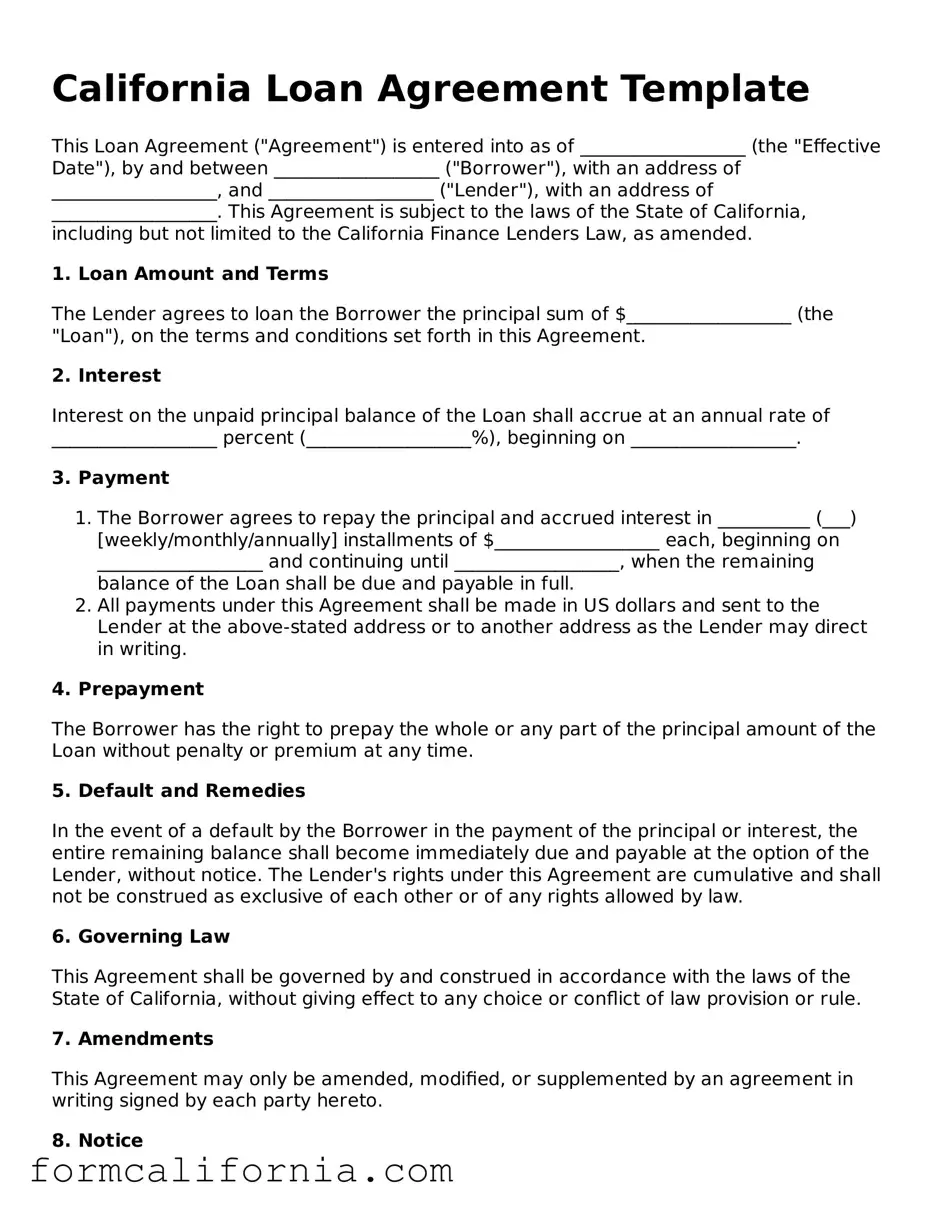California Loan Agreement Template
This Loan Agreement ("Agreement") is entered into as of __________________ (the "Effective Date"), by and between __________________ ("Borrower"), with an address of __________________, and __________________ ("Lender"), with an address of __________________. This Agreement is subject to the laws of the State of California, including but not limited to the California Finance Lenders Law, as amended.
1. Loan Amount and Terms
The Lender agrees to loan the Borrower the principal sum of $__________________ (the "Loan"), on the terms and conditions set forth in this Agreement.
2. Interest
Interest on the unpaid principal balance of the Loan shall accrue at an annual rate of __________________ percent (__________________%), beginning on __________________.
3. Payment
- The Borrower agrees to repay the principal and accrued interest in __________ (___) [weekly/monthly/annually] installments of $__________________ each, beginning on __________________ and continuing until __________________, when the remaining balance of the Loan shall be due and payable in full.
- All payments under this Agreement shall be made in US dollars and sent to the Lender at the above-stated address or to another address as the Lender may direct in writing.
4. Prepayment
The Borrower has the right to prepay the whole or any part of the principal amount of the Loan without penalty or premium at any time.
5. Default and Remedies
In the event of a default by the Borrower in the payment of the principal or interest, the entire remaining balance shall become immediately due and payable at the option of the Lender, without notice. The Lender's rights under this Agreement are cumulative and shall not be construed as exclusive of each other or of any rights allowed by law.
6. Governing Law
This Agreement shall be governed by and construed in accordance with the laws of the State of California, without giving effect to any choice or conflict of law provision or rule.
7. Amendments
This Agreement may only be amended, modified, or supplemented by an agreement in writing signed by each party hereto.
8. Notice
All notices, requests, claims, demands, and other communications hereunder shall be in writing and shall be given (and shall be deemed to have been duly given if given) by personal delivery, email, or registered or certified mail (postage prepaid, return receipt requested) to the respective parties at the address as specified in this Agreement or to such other address as either party may specify in writing to the other party.
9. Signatures
This Agreement shall be executed by both parties as an indication of their agreement to the terms herein and may be executed in counterparts, each of which shall be deemed an original, but all of which together shall constitute one and the same instrument.
IN WITNESS WHEREOF, the parties hereto have executed this Agreement as of the Effective Date first above written.
__________________________________
Borrower: __________________________
Date: ______________________________
__________________________________
Lender: ____________________________
Date: ______________________________
